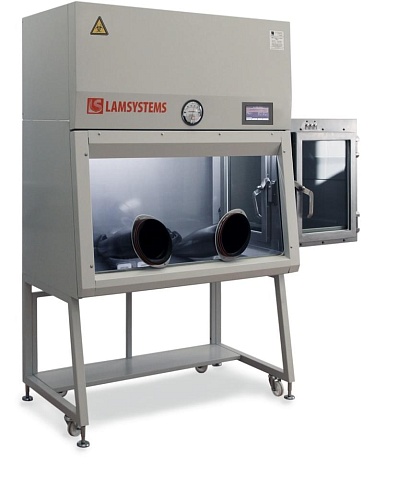Laminar Flow Hood vs. Biological Safety Cabinet

Laminar Flow Hood vs. Biological Safety Cabinet
Specialized enclosures have a common feature of providing a clean working area. However, different types of equipment ensure distinctive levels of personnel or environmental protection. Before working with hazardous agents, here is what you need to know about the safety features of a laminar hood and a biosafety cabinet.
How This Equipment Works
The first type of enclosure is a device that ensures a dust- and germ-free atmosphere. It is used to create and maintain a sterile working environment when performing research work and other laboratory activities.
It implies working with samples that are safe for personnel and the environment. The design is meant to protect materials from contamination. So, the materials used must be low-risk products and specimens.
The laminar flow hood just like a BSC device works by forcing air through a HEPA superfine fiber filter and arresting very fine particles but not gasses and odor. At the stage of passing through a filter, the device filters out air-transported contaminants. Then, by means of the pressure chamber, it provides a unidirectional vertical pattern to force the air.
The exhaust of air is performed two-fold: through the work opening between the front sash and the worktop; and partially, through the perforation located on the bottom rear.
A biological safety cabinet employs another mechanism and is used for purposes beyond sample protection. We’ll go into a more detailed explanation of how this type of equipment operates in the next section.
What Does Class I, II,& III Mean?
Slightly different from a laminar flow hood, a biological safety cabinet is an enclosure for a user, product, and environment protection. It is used when the activity involves handling potentially hazardous microorganisms. This type of equipment is further classified into three classes.
BSC Class I, unlike laminar flow hoods, protects the worker from agents by eliminating their exposure to the material. Class 1 is used when an agent could harm the operator or could be transported to other areas and affect others. Also, it is used in experiments that potentially involve volatile liquids or the formation of volatile liquids.
As for various Class II cabinets, the difference between them is caused by the percentage of air exhausted and re-circulated from the common air plenum. To give a general explanation, BSC Class II cabinets ensure personnel, product, and environmental protection in the following situations:
- Work using biological agents without volatile toxic chemicals (Type A1);
- Minute quantities of hazardous chemicals (Type A2);
- Work with minute amounts of volatile chemicals and radionuclides (Type B1);
- Work involving biological agents treated with hazardous chemicals (Type B2);
- Use of hazardous vapors or radionuclides (Type C1).
Class III cabinets provide maximum protection to the environment and the worker. This kind of equipment is usually installed in maximum containment laboratories for manipulations of microorganisms, bacteria, fungi, viruses, and parasites from high-risk groups. These biosafety cabinets fully keep materials isolated inside the cabinet, which is not the case with laminar hoods, but slightly restrict the movements of the worker.
How to Choose
The first type of equipment ensures the cleanliness of the sample that is being handled inside. It keeps them free from airborne impurities, chemicals, objects, and other foreign matter that could lead to external contamination. Unlike with biosafety cabinets, the purpose of laminar hood excludes the operator or environment protection.
Biological safety cabinets isolate potentially hazardous biological agents and remove the air from the area with the necessary precautions. Thus, it protects the sample from being contaminated as well as personnel and the environment from being exposed to the material.
In conclusion, the choice between a laminar flow hood and a biological safety cabinet depends on the safety requirements at a given laboratory activity. If the focus is on protecting the object and ensuring the operator handles it in a pure working space, it calls for the first option.
A biological safety cabinet is required when there is a degree of potential hazard associated with the proposed experiment, it involves volatile substances, the results need to be protected from ambient contamination.